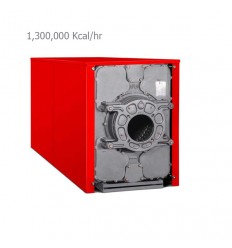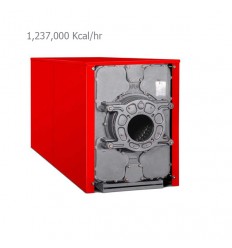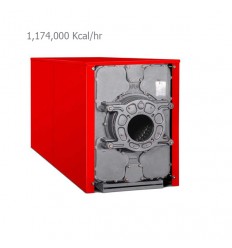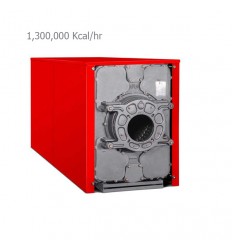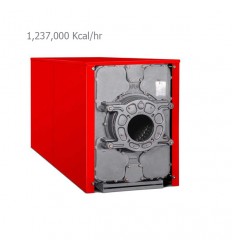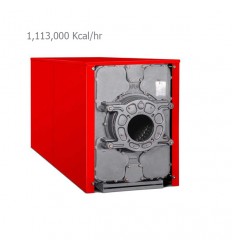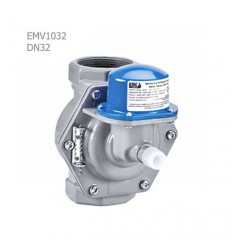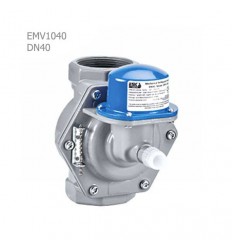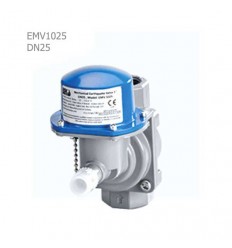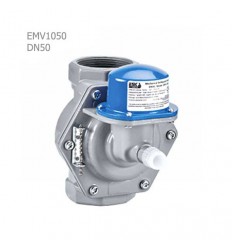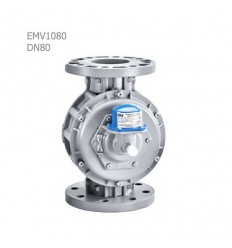- On sale!
- Out-of-Stock
-
Account
-
-
Shopping Cart
Cart is empty.









Connection size
Connection size
On sale
Chauffagekar Star 1300-20 Cast Iron Boiler
- Dimensions of the boiler (length, width, height): 3680 * 900 * 1200 mm
- Number of blades: 20
- Working pressure: 10 bar
- Avoids energy loss with complete insulation of the cloak
Warranty :
10 years Chauffagekar warrantyWarranty and after-sale Services:
10 years
Warranty terms: 10 years warranty since installation- On sale!
Chauffagekar Star 1300-19 Cast Iron Boiler
- Heating energy: 1237000 kcal/h
- Boiler dimensions (length, width, height): 3520*900*1200 mm
- Number of blades: 19
- Working pressure: 10 bar
- Fuel type: natural gas or gasoline
- On sale!
- On sale!
- Out-of-Stock
Chauffagekar Star 1300-18 Cast Iron Boiler
- Heating energy: 1174000 kcal/h
- Boiler dimensions (length, width, height): 3360*900*1200 mm
- Number of blades: 18
- Working pressure: 10 bar
- Fuel type: natural gas or gasoline
10 Years Warranty
10 years
- On sale!
Chauffagekar Superheat 1300-20 Cast-Iron Boiler
- Heating energy: 1,300,000 kcal/h
- Boiler dimensions (length, width, height): 3680*900*1200 mm
- Number of blades: 20
- Working pressure: 6 bar
- Fuel type: natural gas or gasoline
10 Years Warranty
10 years
- On sale!
Chauffagekar Superheat 1300-19 Cast-Iron Boiler
- Heating energy: 1237000 kcal/h
- Boiler dimensions (length, width, height): 3520*900*1200 mm
- Number of blades: 19
- Working pressure: 6 bar
- Fuel type: natural gas or gasoline
10 Years Warranty
10 years
- On sale!
Chauffagekar Star 1300-17 Cast Iron Boiler
- Heating energy: 1113000 kcal/h
- Dimensions of the boiler (length, width, height): 3200*900*1200 mm
- Number of blades: 17
- Working pressure: 10 bar
- Fuel type: natural gas or gasoline
- On sale!
Earthquake Sensitive Valve
As you know, the main prerequisite for doing anything is to have correct information about that subject. Regarding selection, checking the prices, buying, and getting to learn more about earthquake-sensitive valves, the following information is included so that you, dear visitors of the specialized website of DamaTajhiz, can use these tips to get enough information to choose and buy earthquake-sensitive valves of Eska brand in bulk.
A guide to choose and buy an earthquake-sensitive valve
Earthquake is one of the unpredictable events that occur due to the release of energy due to rapid rupture in the earth's crust faults. As a result of their occurrence, sometimes small and minor irreparable events occur; unfortunately, many of these events are due to leakage. Gas leaks cause gas and fires. The earthquake-sensitive valve is an automatic gas flow shut-off valve that shuts off the gas flow inside the building's gas pipe during an earthquake under the influence of ground shaking. If this valve is closed, the breaker will not be able to automatically return to the initial state and open the gas flow path; therefore, to connect the gas flow after removing the risk of an earthquake, there is a need for manual adjustment to re-establish the gas flow.
Earthquake-sensitive valves are generally open and close only when an earthquake occurs. The parts of this valve are designed in such a way that they are solid and durable and are resistant to moisture, corrosion, and temperature changes. These valves can be horizontal and vertical and are installed according to the installation position after the regulator and meter at the entrance of the building. Join us in introducing and checking the performance of earthquake-sensitive valves in the rest of this article (for wholesale purchase).

Types of sensitive valves to earthquakes
There are two types of earthquake-sensitive valves, mechanical and electrical.
Valve sensitive to mechanical earthquake
As the name of these valves suggests, these valves are closed mechanically. Inside the chamber of these valves, there is an earthquake-sensitive ball, which in case of an earthquake with a magnitude of at least 4, this ball will move and close the gas flow path in the pipeline.
The ball inside the housing of the mechanical valves alone does not close the gas path, but by a pre-designed mechanism, it commands a rod to cut off the gas flow completely. There is a possibility of this valve tilting during an earthquake and throwing a ball out of the valve chamber; in this case, it is not recommended to use this valve again.
Valve sensitive to electric shock
Valves sensitive to electric earthquakes operate based on P-type waves, which occur 10 to 60 seconds before an earthquake. There is a sensor inside the earthquake-sensitive valves that will immediately issue an order to cut off the gas flow if these or other unusual waves are detected.
Another type of sensor is the carbon monoxide gas-sensitive sensor that sounds an alarm if the gas is detected and sends a signal to close the valve in the gas flow path, which is also called a gas leak detector. This sensor can be used at home next to the fireplace or heater, which sounds when it senses gas.
Parts of the valve sensitive to earthquakes
Operating part: Receives a command from the sensor part and activates the part that cuts off the gas flow.
Gas-sensitive valve device: It is a set of sensors and activators to cut off the gas flow on the gas piping system.
Sensing device: The valve part is sensitive to gas earthquakes, which senses the vibration or the P wave.
Shut-off device: It is another part of the valve sensitive to the gas earthquake, which receives the command from the sensor and cuts off the gas flow.
Reasons for using an earthquake-sensitive valve
The discovery of gas and its primary use and the damages caused by earthquakes, accidents, and destruction of buildings, fires, and explosions resulting from it, will bring the accumulation and leakage of gas, which will leave destructive effects on minor activity and sparks. Here, the importance of earthquake-sensitive valves or gas shut-off valves is felt. Here, the importance of the presence of earthquake-sensitive valves or gas shut-off valves in facilities and buildings in preventing gas leakage can be seen.
Essential points in installing an earthquake-sensitive valve
- The installer of the gas department must do the installation of this valve.
- Be careful during installation because this valve closes quickly and will cut off the gas flow.
- Because this valve is sensitive to seismic activities, the installation should be in a place that can understand and move the building, usually installed at a distance of one to one and a half meters from the ground.
- The pipes must be completely clean and free of any solid material.
- The direction of the arrow on this valve indicates the direction of gas flow, so the earthquake-sensitive gas shut-off valve's installation place is in the direction of the arrow.
- Both sides of the valve should be well connected to the gas pipe.
- The adjustment page on the gas shut-off valve must be pulled and held for 50 seconds after being placed inside the chamber.
Application of valves sensitive to earthquakes
Earthquake-sensitive valves are used in places where gas distribution branches are connected to the main meter of the building and in places such as residential buildings, oil and gas facilities, hospitals, factories, and public centers.
Essential points in buying an earthquake-sensitive valve
- To choose earthquake-sensitive valves, you should pay attention to the type and valve of the pipes installed in your home and workplace.
- Buying these taps from authorized and reliable sellers who supply authorized goods is recommended.
- The price of earthquake-sensitive valves is different based on their type and valve.
For more assurance and accurate purchase of earthquake-sensitive valves, contact the safety equipment department at Damatajhiz and ask for advice and guidance about their types and where to use them.
Note: Do not turn on any lamps after an earthquake and after the earthquake-sensitive valve has operated. Be sure to ask an expert and installation officer for help to ensure that the gas does not leak, and do not act personally.
The earthquake-sensitive valve does not need regular maintenance, and because it does not have moving parts, it will not suffer damage and wear, and a technician in the desired location should only install it.
The certificate approved by the earthquake-sensitive valve
According to topic 17 of the National Building Regulations, Clause 17-3-4-3, valves sensitive to earthquakes must have national standards or reasonable international standards; the references of these certificates can be as follows:
Iranian Standards and Industrial Research Organization (National Standard of Iran 10942)
A valid certificate from a prominent industrial country, such as American standard ASCE 25-16, American UL standard, and certificate
Valid international certification such as CE 2159 European certification
Iran's National Gas Company and the country's crisis headquarters recommend the installation of an earthquake-sensitive valve to improve the safety factor of all gas customers.
In the earthquake-sensitive tap group of the Damatajhiz reference site, information and prices of all types of earthquake-sensitive taps from reputable brands with original warranties have been presented for your review and purchase, dear users and employers.
In addition to a valid business license from the heating and air-conditioning trade union, Damatajhiz has an electronic trust symbol and has been operating its store site since 2013 in Tehran's head office.
There are 6 products.
Active filters
Eska Earthquake sensitive Threaded Valve "1/4 1
- Maximum working pressure: 0.5 bar
- Assembly position: vertical
- Permissible operating temperature: 23- + 51.5 ° C
- Application: Urban gas network and gas pipelines in industrial areas
- made in Turkey
- Out-of-Stock
Eska Earthquake sensitive Threaded Valve "1/2 1
- Maximum working pressure: 0.5 bar
- Assembly position: vertical
- Permissible operating temperature: 23- + 51.5 ° C
- Application: Urban gas network and gas pipelines in industrial areas
- made in Turkey
- Out-of-Stock
Eska Earthquake sensitive Threaded Valve "1
- Maximum working pressure: 0.5 bar
- Assembly position: vertical
- Permissible operating temperature: 23- + 51.5 ° C
- Application: Urban gas network and gas pipelines in industrial areas
- made in Turkey
- Out-of-Stock
Eska Earthquake sensitive Threaded Valve "2
- Maximum working pressure: 0.5 bar
- Assembly position: vertical
- Permissible operating temperature: 23- + 51.5 ° C
- Application: Urban gas network and gas pipelines in industrial areas
- made in Turkey
- Out-of-Stock
Eska Earthquake sensitive Flange Valve "3
- Maximum working pressure: 0.5 bar
- Assembly position: vertical
- Permissible operating temperature: 23- + 51.5 ° C
- Application: Urban gas network and gas pipelines in industrial areas
- made in Turkey
- Out-of-Stock
Eska Earthquake sensitive Flange Valve "4
- Maximum working pressure: 0.5 bar
- Assembly position: vertical
- Permissible operating temperature: 23- + 51.5 ° C
- Application: Urban gas network and gas pipelines in industrial areas
- made in Turkey
- Out-of-Stock
comments
(0 comment)add comment
Shopping Cart
Cart is empty.





